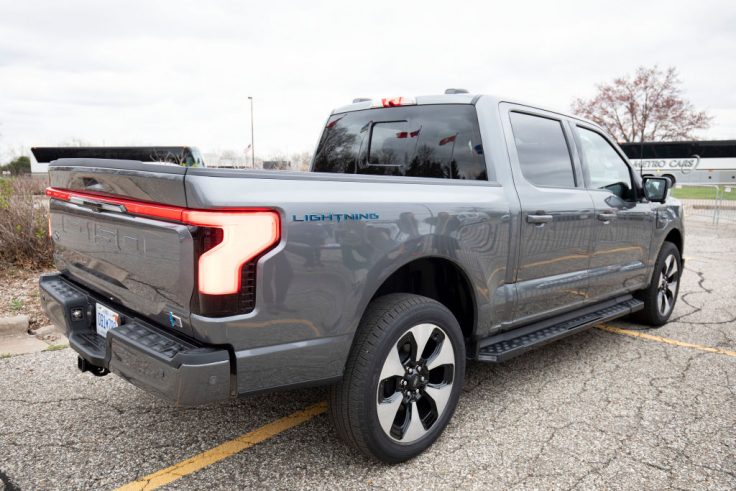Ford CEO Jim Farley said he faced a "reality check" while attempting to charge his electric truck during a road trip across the American West, an admission that comes as President Joe Biden spends billions to spur electric vehicle adoption.
Farley embarked on the trip in Ford’s new electric F-150 Lightning last week in an attempt to "see the EV transition in action." He started in Silicon Valley, made a stop in Los Angeles, and then ended in Las Vegas. Farley documented much of the trip on social media, including his late-night charging sessions and the "challenging" nature of obtaining enough power to travel long distances.
"Charging has been pretty challenging," Farley said, adding that at one stop it took him 40 minutes to charge his truck's battery to just 40 percent. "It was a really good reality check—the challenges of what our customers go through."
A lack of reliable charging stations is a common concern for electric vehicle drivers. That concern, however, has not stopped the Biden administration from proposing rules that would effectively require automakers to ensure two-thirds of the vehicles they sell are electric by 2032. President Joe Biden is also using his so-called Inflation Reduction Act to spend billions of dollars in an attempt to spur American consumers to adopt electric vehicles.
Farley’s social media posts gave insight into the hurdles associated with driving electric vehicles over long distances. In one post, Farley asked his social media followers to share their experiences with charging on the road. "I too charged and traveled Houston to Phoenix 1100 miles," one user responded. "Not the greatest, many slow, many broken," the user said of the charging stations he encountered on the drive. Farley acknowledged in other posts that finding a charging station wasn’t always easy, telling one user he had to go to multiple stations just to find one that was available.
Farley nonetheless praised other aspects of Ford’s new F-150 Lightning, including its front-end trunk he called a "frunk" and the "community of EV drivers" he met while waiting at charging stations. The Ford CEO also displayed the truck’s ability to power non-travel related tasks, like helping jump a disabled individual’s electric scooter and powering the inflation of a children’s bouncehouse.
Earlier this year, the Biden administration unveiled a new rule to limit tailpipe emissions, which is aimed at ensuring two-thirds of new vehicles are electric by 2032. That benchmark far exceeded Biden’s 2021 executive order pushing for half of all vehicles sold by 2030 to be zero-emission. Still, getting drivers to hop on board with the EV transition has been difficult. Last year, just 6 percent of vehicles sold were electric.
